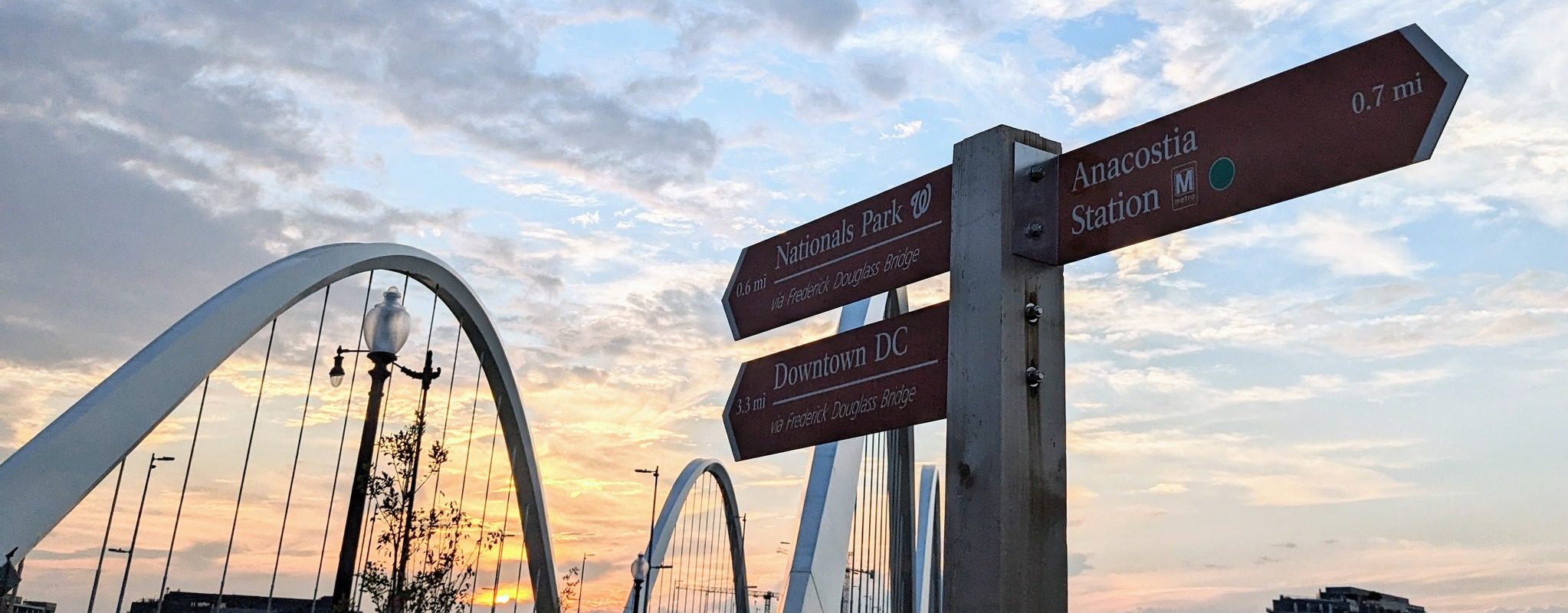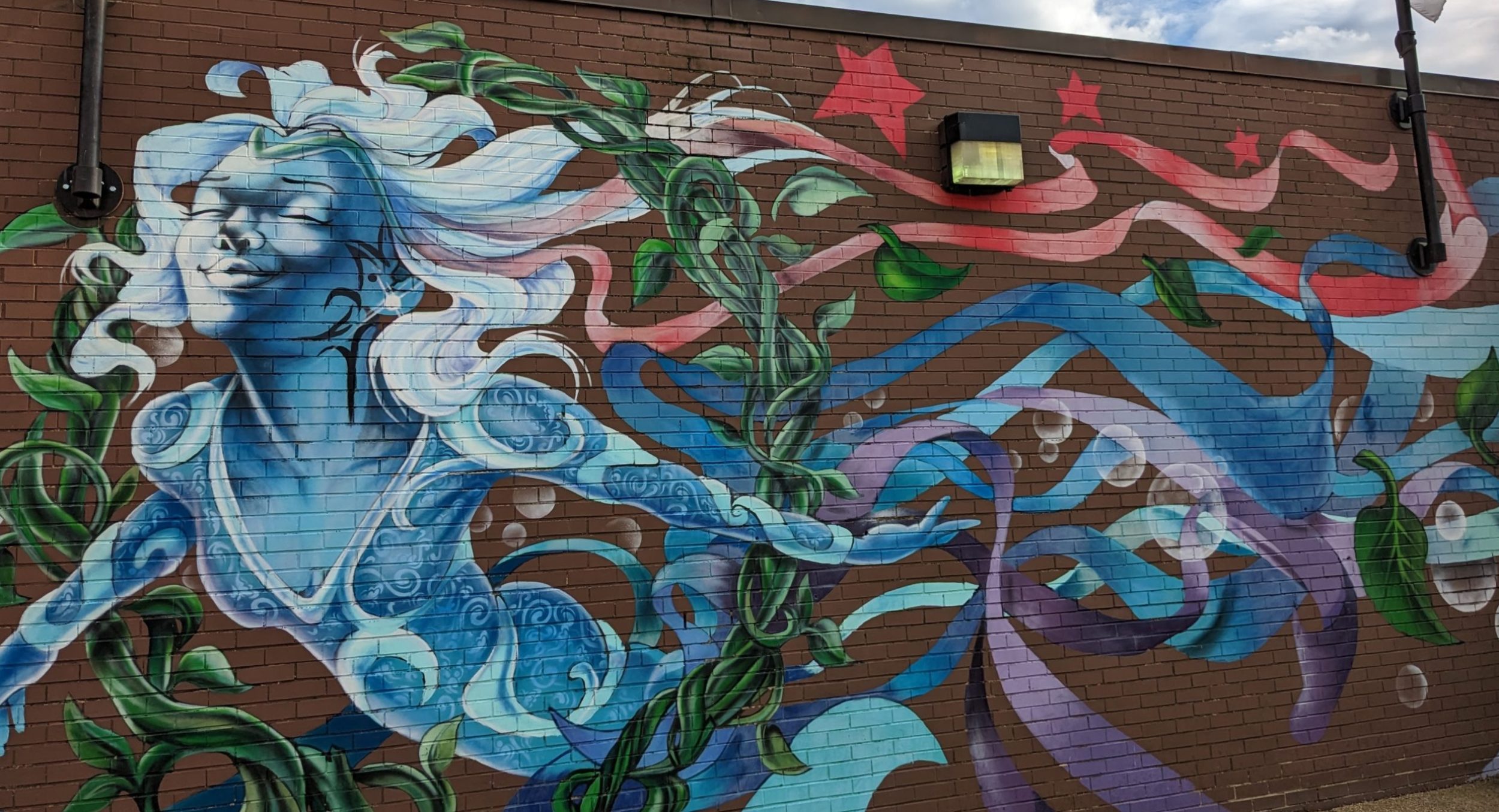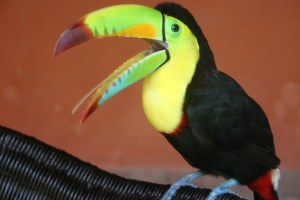 One of the grandest hotels in Cartagena boasts some very colorful permanent guests, toucans. There are at least three of them at the Sofitel Santa Clara, which is a converted17th century convent.
One of the grandest hotels in Cartagena boasts some very colorful permanent guests, toucans. There are at least three of them at the Sofitel Santa Clara, which is a converted17th century convent.  The toucans perch on wicker chairs around the main patio, and play with the guests at breakfast. In their travels around the Santa Clara, these New World birds with their bright bright beaks pass over a courtyard that wouldn’t be out of place in Andalusia or Morocco.
The toucans perch on wicker chairs around the main patio, and play with the guests at breakfast. In their travels around the Santa Clara, these New World birds with their bright bright beaks pass over a courtyard that wouldn’t be out of place in Andalusia or Morocco.
This is why one travels to Cartagena, to see Spanish architecture played out in an American city. Old World and New World also blend in Cartagena’s streets. A gorgeous vibrant plant native to the Americas called bougainvillea cascades from balconies all over the city.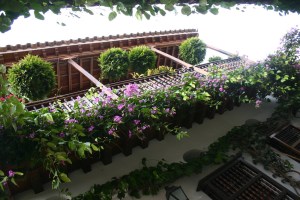
Looking at the buildings in old Cartagena, bougainvillea competes for your eye with architecture details, columns, triangular arches, that made their way from the Mediterranean to the Caribbean.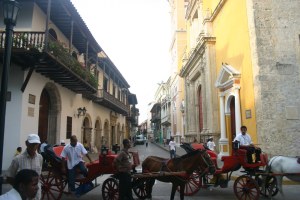
The heart of old Cartagena, founded in 1533, is a lovely little slice of the world. The horse carts in the picture above are used for taking tourists, many from cruise ships, around the old city. On our way from the old town to Cartagena’s bus station,we saw donkey carts for common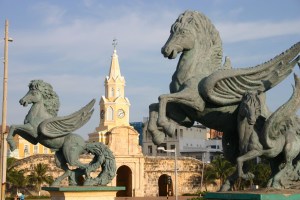 , and not quaint, use. It wasn’t a long trip from the graceful colonial city to the bus station, but it did seem a world away. Greater Cartagena was the poorest part of Colombia that we were to see on our trip, a reminder that about half of the people in the nation live in poverty. (For comparison, about 12 percent of people in the United States do.)
, and not quaint, use. It wasn’t a long trip from the graceful colonial city to the bus station, but it did seem a world away. Greater Cartagena was the poorest part of Colombia that we were to see on our trip, a reminder that about half of the people in the nation live in poverty. (For comparison, about 12 percent of people in the United States do.)
Officially Cartagena de Indias, the city’s name links it to Roman history and lore. It was named for the Spanish Cartagena on the northern Mediterranean Sea, which was named for Rome’s one-time rival, Carthage, in what is now the Arab country of Tunisia. Carthage’s citizen with the most enduring fame is Hannibal (248–183/2 BC), the general who used elephants in an attack on Italian soil. Folk tales wrongly have long said that Romans salted the soil of Carthage to punish the city after defeating it about 146 BC, but that apparently never happened.
Like its predecessors, the American Cartagena is a port city. Its wealth and value came from the sea, and Spanish invested heavily in the colonial years to defend its waters. The city’s main fort is the Castillo de San Felipe de Barajas. It’s an impressive monument that makes visitors wonder how anyone could have built such a massive fort in the heat of Cartagena. The temperature routines ranges into the 90s and has “lows” in the 70s. Cartagena also has a humidity that recalls August days in New Orleans. If that’s a little sticky and hot for taking pictures, it’s painfu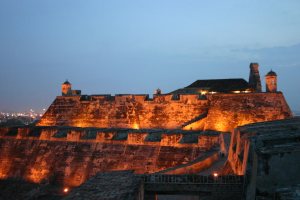 l to imagine working all day on El Castillo. I packed a black umbrella for our trip, a hedge against rain in the Colombia highlands. It turned out that the only time I needed it was to block the brutal sun in Cartagena.
l to imagine working all day on El Castillo. I packed a black umbrella for our trip, a hedge against rain in the Colombia highlands. It turned out that the only time I needed it was to block the brutal sun in Cartagena.
I spent one day ill from a bad meal, something that can –and does– happen anywhere in the world. My husband David came back to our nice cool air-conditioned room in the Getsamani section of Cartagena, and told me of his travels through the city that day. He had tried to followed Cartagena custom for handling the heat, and imitated locals by walking as much as he could in the shade of buildings. There was a flaw, though, in his plan for staying cool — his complete inability to ratchet down his pace to a stroll from a more speedy walk.
“They moved slowly where I was zipping,” David said, conjuring for me the picture of a handsome Mr. Bean-like character darting around the more moderately paced local folks.
Tips for folks visiting Cartagena:
-Try lunch at La Muleta Cartagena. It’s a nicely decorated place with a tasty and cheap lunch specials.
-Dinner at La Vitrola is romantic and the food, especially the tamarind fish, is delicious.
